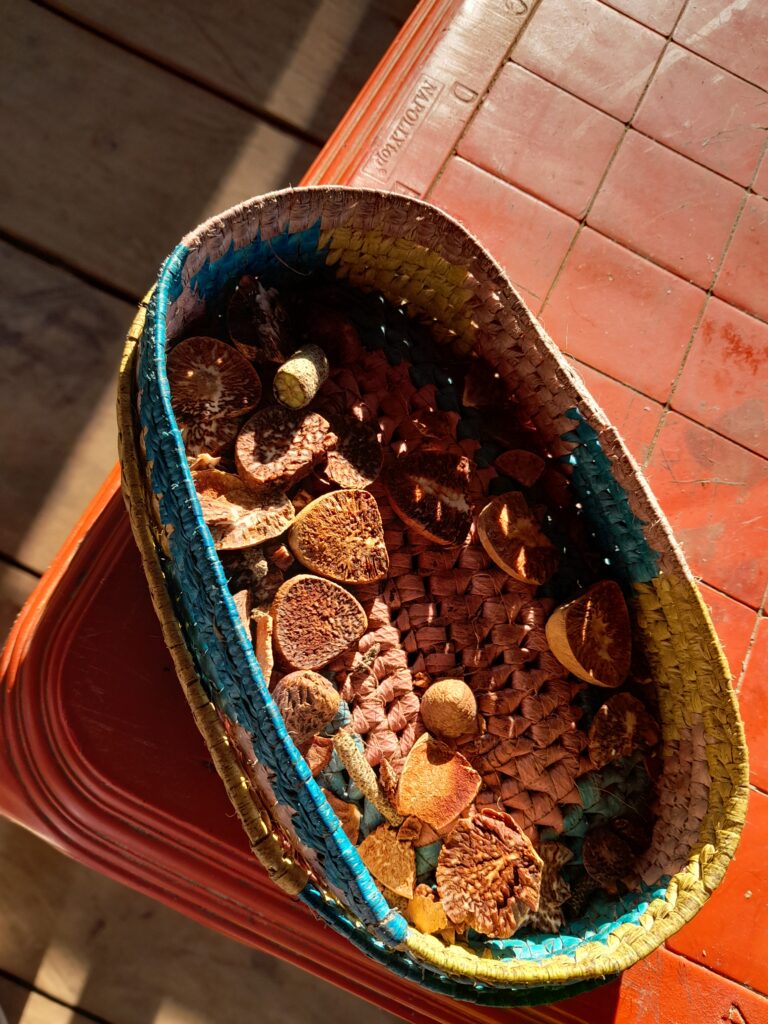For the Sumbanese, betel nut is not just a tradition. Betel nut is a symbol of a close bond between respect, intimacy, and acceptance. As a woman of Batak descent, I grew up seeing mothers chewing betel nut as part of their daily lives. In Batak land, this habit is believed to be able to maintain dental and oral health. However, when I came to Wanggameti village and other villages in Sumba, I found a much deeper meaning.
In East Sumba, betel nut consists of three main components: betel, areca nut, and lime. These three elements are not just ingredients, but contain strong symbolism. Every time a guest comes to the house, betel nut is the first offering, a sign of acceptance and respect. For the Sumbanese people, not serving betel nut to a guest is considered impolite.
Betel nut is considered more than just a custom. Betel nut is a unifying tool that facilitates social interaction between communities. When sitting together and sharing betel nut, communication becomes warmer and more open. This custom does not only apply to traditional events, but also in everyday life. Even when relaxing with family, betel nut is still present as a glue between family members.
When someone receives a serving of betel nut, it symbolizes the bond that exists between the host and the guest. Betel nut is a medium that can lighten the atmosphere and strengthen family relationships. Not only among fellow Sumbanese, but also with other tribes in Sumba.
Each part of the betel nut has its own meaning that is highly valued by the Sumbanese people. First, the betel nut is a symbol of acceptance. The offering of betel nut from the host to the guest is a sign that the guest is well received and with open arms. This is the beginning of an interaction full of honor and appreciation.
Second, betel nut as a symbol of respect. This offering not only shows politeness, but also deep respect for the guest. Even if the guest does not consume betel nut, this offering is still a symbol of the host's appreciation for their presence.
Third, betel nut as a symbol of intimacy. Chewing betel nut together creates a sense of family and kinship. This strengthens the emotional bond between the people involved, as if they were connected through a local tradition that has existed for hundreds of years.
In every traditional ceremony, such as marriage or death, betel nut is always an important part. When guests from various tribes come to a traditional event, they are presented with a place containing betel, areca nut, and lime. This is where the symbolic exchange process between guests and hosts occurs. This exchange is a way for people to show respect and strengthen social ties.
Betel nut also has a greater meaning as a symbol of solidarity. When people gather and chew betel nut together, they feel a sense of togetherness that transcends differences. This is the community's way of expressing that they are one in the big Sumbanese family, regardless of differences in tribe, status, or background.
Although perhaps for other tribes, betel nut is only consumed by the elderly, in Sumba, this tradition involves all generations. Both young and old, they still make betel nut a part of their lives. This tradition is passed down from generation to generation, becoming a bridge that connects the past with the present.
Betel nut is not only a local tradition preserved by the Sumbanese people. More than that, it is a symbol of acceptance, respect, and familiarity that is woven into every social interaction. Betel nut has become a medium that strengthens relationships, both among Sumbanese people and with other tribes. In the togetherness of chewing betel nut, the Sumbanese people not only preserve their ancestral heritage, but also strengthen the solidarity and unity that has existed for centuries.


